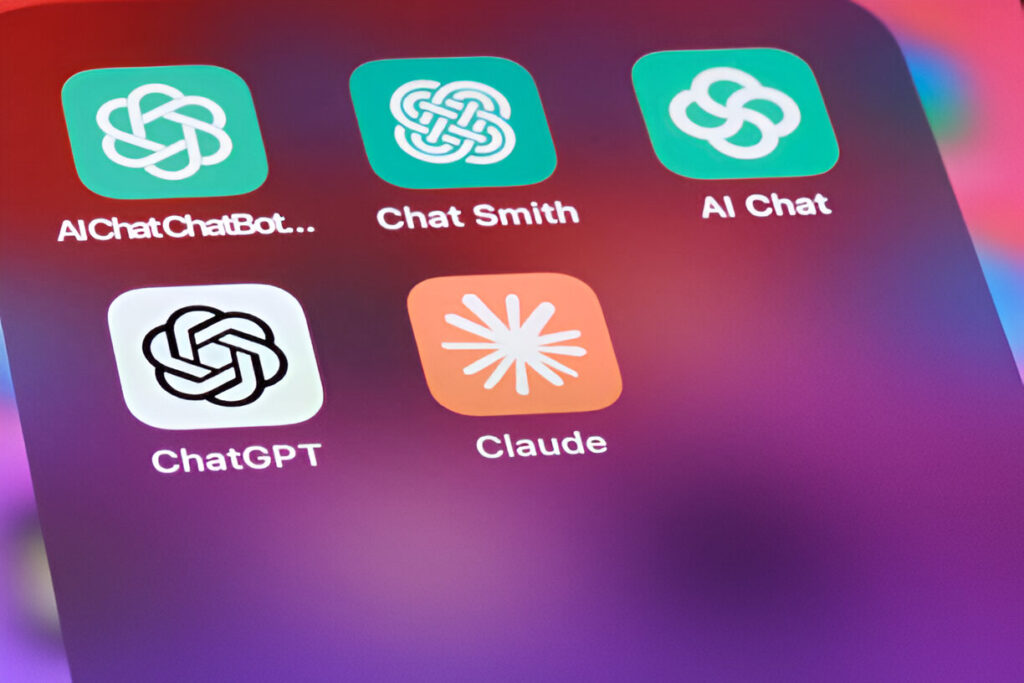Can Canvas Detect ChatGPT?: Hey there, ever wondered if that essay written with a little help from ChatGPT might get flagged in Canvas? You’re not alone. With AI writing tools becoming more popular, students (and maybe even some stressed-out educators!) are curious about how Canvas handles this new frontier.
Let’s break it down. Canvas, at its core, is a fantastic Learning Management System (LMS) that helps streamline coursework and communication. Think of it as your online classroom hub. But while Canvas keeps things organized, it doesn’t have a built-in detector that can sniff out AI-generated text specifically.
However, that doesn’t mean you can submit an essay crafted entirely by ChatGPT and sail through unnoticed. Here’s where things get interesting – Canvas often integrates with third-party plagiarism checkers. These are like super-powered grammar tools that go beyond typos and comma woes. They use advanced algorithms to analyze your writing for signs of plagiarism, including content lifted from websites and, you guessed it, AI-generated text.

Table of Contents
How Does Canvas Catch AI-Generated Content (Including ChatGPT)?
So, how do these plagiarism checkers, working alongside Canvas, catch AI-generated content like essays written with ChatGPT? It’s all about spotting patterns. These checkers are like bloodhounds trained to sniff out unusual writing styles and phrasing that might indicate AI involvement.
Imagine a perfectly polished essay, but with a robotic undertone. The checker might pick up on repetitive sentence structures or clunky transitions that wouldn’t appear in a human-written piece. Additionally, AI-generated text can sometimes struggle with logical flow, making the overall argument feel disjointed. These are just a few examples, and the detection methods are constantly evolving as AI writing tools become more sophisticated.
Here’s a real-world example: Let’s say you used ChatGPT to generate the body paragraphs of your history essay. The plagiarism checker might flag those sections because they lack the depth and analysis expected from a human student who has researched the topic. Remember, while AI can churn out text quickly, it often lacks the nuance and critical thinking skills that go into a well-crafted academic paper.
Some popular plagiarism checkers used with Canvas include Turnitin, which analyzes your text against a massive database of sources and student papers. Others, like Unicheck, use advanced algorithms to identify unusual writing patterns and potential plagiarism.
What Does AI Detection Look For (Focus on ChatGPT Style)?
Alright, we’ve established that plagiarism checkers can catch AI-generated content, but what exactly are they looking for? Here’s where things get a little technical, but don’t worry, we’ll keep it clear!
These checkers use a combination of techniques, but a big focus is on identifying patterns in the writing style that deviate from what’s expected in a human-written piece. Here’s how this might apply specifically to content generated by ChatGPT:
- Unusual Phrasing: AI writing assistants, like ChatGPT, can sometimes struggle with natural language. They might produce sentences that sound grammatically correct but feel awkward or out of place. Imagine an essay filled with overly complex vocabulary or weirdly formal language – that could be a red flag for AI detection.
- Lack of Logical Flow: Human writers naturally structure their arguments with a clear flow of ideas. AI-generated text, however, can sometimes jump around or lack transitions, making the overall argument feel disjointed. Think of it like reading a story where the plot points don’t quite connect – that’s a potential sign of AI involvement.
- Repetitive Sentence Structures: AI can fall into the trap of repeating the same sentence structure over and over again. This might be a telltale sign for plagiarism checkers, especially if the rest of your writing style varies.
- Missing Citations and References: AI tools often struggle to understand the importance of proper citations and references. If your essay is full of great information but lacks citations, it could raise suspicion, especially if the writing style itself seems unusual.
Remember, these are just some examples, and AI detection methods are constantly being refined. The key takeaway is that while AI writing tools can be tempting, they often leave behind stylistic fingerprints that advanced plagiarism checkers can pick up on.

Ensuring Academic Integrity with Canvas (For Students)
Let’s face it, churning out high-quality essays can be tough. But before you even consider using an AI writing tool like ChatGPT, it’s important to remember the golden rule: academic integrity. This means submitting original work that reflects your own understanding and critical thinking.
Here’s the deal: Leaning on AI for your assignments might seem like a quick fix, but it can backfire in several ways. First, there’s the risk of getting caught by plagiarism checkers. Second, relying on AI hinders your own development as a writer and thinker. The skills you hone through research, analysis, and crafting your arguments are essential for academic success and beyond.
So, how can you ensure academic integrity with Canvas? Here are some tips:
- Prioritize Original Work: This might seem obvious, but it’s worth emphasizing. Invest time in understanding the topic, researching from credible sources, and developing your own arguments.
- Sharpen Your Writing Skills: There are tons of resources available through Canvas and your school to help you improve your writing. Workshops, online tutorials, and even peer review sessions can be incredibly valuable.
- Learn to Paraphrase Effectively: Don’t just copy-paste information from sources. Learn how to paraphrase effectively, which means putting information into your own words while still giving credit to the original source.
- Master Citation Techniques: Proper citation isn’t just about avoiding plagiarism; it shows respect for the work of others and strengthens your arguments. Utilize citation guides and resources provided by your school or Canvas itself.
Remember, your instructors are there to support your learning journey. If you’re struggling with a topic or need help with writing, don’t hesitate to reach out for guidance. By prioritizing originality, honing your writing skills, and using resources effectively, you can ensure academic integrity and succeed in your Canvas courses.

Additional Considerations for Educators (Using Canvas)
The landscape of educational technology is constantly evolving, and AI writing tools like ChatGPT are no exception. As educators using Canvas, it’s important to stay informed about these advancements and how they might impact academic integrity. Here are some key points to consider:
- Stay Updated on AI Detection: Plagiarism checker developers are constantly working to refine their algorithms to stay ahead of evolving AI writing tools. Familiarize yourself with the capabilities of the plagiarism checker integrated with your Canvas instance and any updates they provide.
- Clear Communication is Key: The best defense against plagiarism, including AI-generated content, is clear communication with your students. Clearly outline your expectations regarding originality and proper citation in your course syllabus and reiterate them throughout the semester.
- Encourage Open Dialogue: Create a classroom environment where students feel comfortable asking questions and seeking help. This can help prevent them from resorting to AI tools out of frustration or a lack of understanding.
- Focus on Learning Outcomes: Ultimately, the goal is for students to gain knowledge and develop critical thinking skills. Instead of solely focusing on catching plagiarism, design assignments that encourage in-depth analysis, research, and original thought.
By staying informed, fostering open communication, and emphasizing meaningful learning experiences, educators can effectively address the challenges presented by AI writing tools within the Canvas platform.

The Future of AI Detection in Education
The use of AI writing tools in education is a relatively new phenomenon, and the way we detect and address it is constantly evolving. Here’s a glimpse into what the future might hold:
- More Sophisticated Detection Methods: Expect plagiarism checkers to become even more adept at identifying AI-generated content. Advancements in Natural Language Processing (NLP) could enable them to analyze not just writing style but also the underlying logic and reasoning presented in a text, making it even harder for AI-written content to slip through the cracks.
- Focus on Critical Thinking Skills: As AI detection methods become more robust, educators might shift their focus from simply catching plagiarism to fostering critical thinking skills in students. This could involve designing assignments that require students to analyze information, synthesize ideas, and develop their own arguments – tasks that are currently a challenge for most AI writing tools.
- The Rise of Explainable AI: In an ideal future scenario, AI detection might not just flag content as AI-generated, but also explain why it reached that conclusion. This “explainable AI” could provide valuable insights to both students and educators. Students could learn from their mistakes and improve their writing skills, while educators could gain a deeper understanding of how AI writing tools operate and adapt their teaching strategies accordingly.
The ultimate goal is to create a learning environment where AI is used as a complementary tool, not a shortcut. With ongoing advancements in AI detection and a focus on critical thinking skills, both educators and students can navigate the evolving landscape of educational technology and ensure academic integrity in the digital age.
Conclusion
The world of education is constantly adapting to new technologies, and AI writing tools like ChatGPT present both challenges and opportunities. While these tools can be tempting, remember that true learning comes from developing your own critical thinking and writing skills.
Canvas, with its integrated plagiarism checkers, can be a valuable tool in ensuring academic integrity. However, the best defense against plagiarism is a commitment to original work. By prioritizing research, proper citation, and clear communication with your instructors, you can successfully navigate the digital learning landscape and achieve your academic goals.
This guide has hopefully equipped you with the knowledge you need to understand how Canvas handles AI-generated content. Remember, the most valuable takeaway is the importance of academic integrity and the skills you gain through honest effort. So, ditch the AI shortcuts and embrace the power of original thought – it will serve you well throughout your academic journey and beyond.
FAQ
Can Canvas directly detect if I used ChatGPT on an assignment?
No, Canvas itself cannot detect AI-generated content. However, it often integrates with plagiarism checkers that use sophisticated algorithms to identify unusual writing patterns and phrasing often associated with AI tools. These checkers can flag your work for further review by your instructor.
How can I avoid getting caught using ChatGPT for my Canvas assignments?
The best way to avoid getting caught is to prioritize original work and avoid plagiarism altogether. Utilize Canvas resources and workshops to improve your writing skills. If you need help understanding a topic, paraphrase information from credible sources and cite them properly. Remember, using AI tools to create content you don’t understand defeats the purpose of learning.
Are there any legitimate uses of AI writing tools in education?
AI tools can potentially be used as brainstorming aids or for basic content generation. However, it’s crucial to always fact-check and rewrite AI-generated content in your own words to ensure understanding and avoid plagiarism. Additionally, some educators might allow the use of AI tools for specific exercises, but only if they are transparent about it and the focus remains on developing critical thinking skills through analysis and revision.
Remember:
1. Building strong writing and research skills is essential for academic success.
2. There are many resources available through Canvas and your school to help you improve your writing.
3. Honest communication with your instructors is key to a successful learning experience.
By focusing on originality, utilizing resources effectively, and fostering open communication, you can ensure academic integrity and make the most of your educational journey with Canvas.









